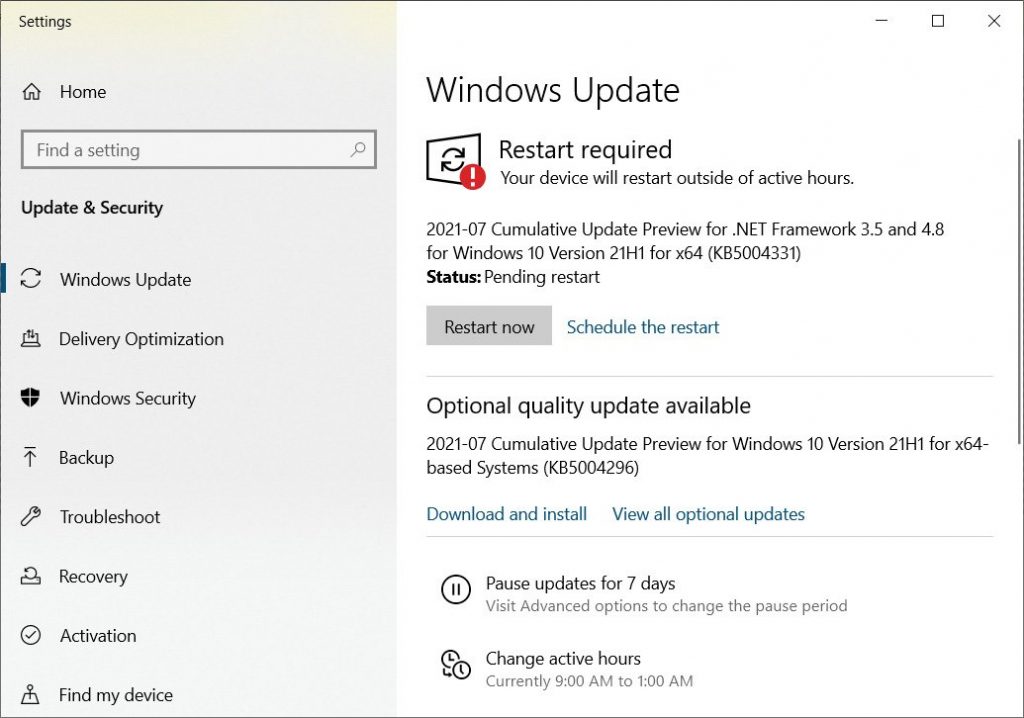When you buy a new computer, you probably expect it to be fast! Or at least, faster than the previous computer…. But that’s not always the case. Some new computers disappoint with sluggish performance as they are first turned on. “Why is my new computer so slow?” Here are some common answers to this:
Windows Updates
Microsoft is always updating Windows with improvements and security patches. Some updates are small & light, while others are bulky and take a lot of time and bandwidth to download and install. In most cases, your new computer will begin work on these updates, silently & automatically, as soon as it detects an internet connection.
But how long was your computer sitting on the shelf at the store? A couple of months? Longer? This may mean that your new laptop is now working hard to catch up on dozens of updates, missed during its time in the stockroom. This can bog down even the best of computers, and the problem can be further exacerbated if your internet is slow.
The best solution here is patience. Click Start, go to Settings, and then go to Update & Security (for Windows 10) or Windows Update (Windows 11). Your PC may already be updating, and you can leave this screen open as you wait for them to finish. If Windows is not updating, use any buttons you see here to “Check For Updates” or “Download & Install Updates”.
These updates might take a long time to process, so feel free to leave the computer on and running overnight, and check back in the morning.
Always Restart after any updates appear to finish, and then return to this same Settings area, in case there are more Updates coming. Eventually you will visit this panel and find that there are No New Updates. Then, re-judge your computer’s speed, and you may find it’s ready to do a better job for you.
Shovelware
Every manufacturer shovels on a bunch of unnecessary software before they ship their computers off to the stores. Some of it is just there for marketing purposes. Other shovelware has good intentions (speed up your connection, clean up your hard drive) but it usually turns out to be more trouble than it’s worth. And of course, there’s always a trial antivirus software in there, asking for money and dragging things down even further.
The first solution here is to remove the 3rd party antivirus. Whatever it is, I do not recommend you use it! Home-use computers are protected just as well using the free Microsoft Defender Antivirus as they are with any commercial product. So I recommend you uninstall Norton or McAfee or whatever protection software is present, and then reboot your system. Afterwards, use the white or blue shield icon near the time & date to check that the Virus & Threat Protection is turned on and has a green checkmark.
The follow-up solution is to eliminate the burden of the other shovelware. That differs from one computer to the next, and would be hard to detail in a single blog post. But there is a handy tool that can disable most shovelware, no matter what brand of computer you’ve bought: ADWCleaner. This free download is meant to remove malware after a quick scan, but after that, it will also identify unnecessary apps and neutralize them. I recommend running this tool and disabling everything it targets as unnecessary.
Traptops
I’ve written about ultra-cheap, underpowered laptops before, and how they are essentially traps that I wouldn’t wish on anyone. These “traptops” are deceptively marketed as fantastic deals, but are anything but. Hallmarks of these disappointing Windows computers may include:
- Price is around $200
- Storage is listed as 32GB or 64GB
- RAM is 2GB or 4GB
- Processor is an AMD Dual-Core or an Intel Silver/Gold/Celeron/Atom
Unfortunately, if you buy one of these types of computers, there may be no solution for its lack of speed. This class of computer is non-upgradeable with its RAM and its storage drive. And the processor is often deliberately throttled to a slower speed, so that it won’t overheat and harm the motherboard. This allows the manufacturer to design and build the computer with fewer (or no) cooling fans.
TL;DR: If you ask me for help with such a computer, we’ll start by determining if you can possibly return the computer ASAP.




